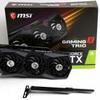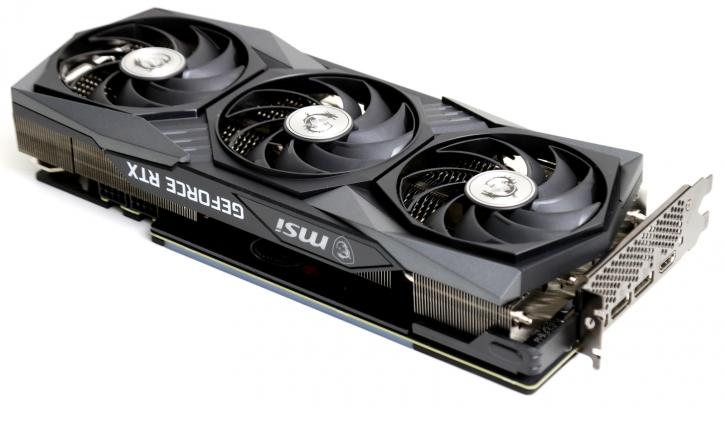Introduction
MSI GeForce RTX 3060 Ti Gaming TRIO X 8GB
We review the MSI GeForce RTX 3060 Ti Gaming TRIO C 8GB. Armed with admirable looks, a beast of a cooler, this card runs both silent and at low temperatures whilst performing at GeForce RTX 2080 SUPER performance levels. And that makes this product seriously interesting. The 3060 Ti series are bound to please many as they offer proper gaming performance competing at GeForce RTX 2080 SUPER levels, even slightly above it. Armed with 8GB GDDR6 is might but just what the gaming community needs. Armed with a shader core count of 4864 units, this card is paired with 8 GB of GDDR6 graphics memory running 14 Gbps. Much has been said, rumored, and spoken about this card, as with that sexy shading core count, it is bound to be a bit of a beast in that sub-400 EUR/USD price range. This product will sit at GeForce RTX 2080 (SUPER) performance levels and, in due time, will be its replacement. September 2020, NVIDIA declared its initial Ampere graphics cards in its inaugural launch wave. A week before announcements, specifications of the GeForce RTX 3060 Ti, 3070, 3080, and 3090 took a twist; the shader core count mysteriously doubled from what everybody expected. The GPUs are fabricated on an 8nm node derived from Samsung. This process further develops Samsung's 10nm process; no EUV is applied in production just yet. The first wave of announcements would see the GeForce RTX 3080 and 3090 being released first, and, as a bit of a surprise, the GeForce RTX 3060 Ti and 3070 would be arriving in roughly the same timeframe as well. The initial launch of Ampere for consumers entails the GeForce RTX 3060 Ti 8GB, 3070 8GB GDDR6, RTX 3080 10GB GDDR6X, and what we test today, the 24GB GDDR6X based premium flagship, the mighty mo, the GeForce RTX 3090. The lineup nearly doubles ray-tracing performance with Gen2 ray-tracing cores and 3rd iteration Tensor cores. These cards will all be PCIe 4.0 interface compatible and offer HDMI 2.1 and DisplayPort 1.4a, but most importantly is that exorbitant Shader processor count (referred to as CUDA cores by NVIDIA), passing the 10K marker for the flagship product, nobody... not even us, saw that one coming. With just over half the shader processor count seen from the flagship product, we now meet the NVIDIA GA104 GPU again; initially, it was to be used solely in the GeForce RTX 3070 graphics cards, but when rumors emerged that team red would offer a good product sies, all of the sudden the word was out a GeForce RTX 3060 Ti. And despite being a lower segmented card, it still holds a sizable GPU die; the 3070's GA104 GPU is firing up over 17 billion transistors with 4864 active shader cores. To compare, a GeForce RTX 3080 is listed at 8,704 Shader cores, and the GeForce RTX 3090 (GA102) has 10496 Shader cores. In this review, we'll check out the Founder edition, aka FE GeForce RTX 3060 Ti, paired with 8GB of GDDR6 graphics memory. A product that runs a boost clock of 1665 MHz and enough power under the hood that makes you smirk.
Gaming TRIO X
MSI submitted their popular Gaming TRIO X model. Armed with a BIOS that offers an 1830 MHz Turbo, increased power limiter, and a cooler that you'll bow to, this product was designed to shine (and I do mean that in a positive manner, not the RGB one;). The TRIO X is a premium product, and it shows that in all its ways. That factory tweak, the sheer aesthetics, and of course the cooling performance numbers to back it up. This card manages to produce 32 Dba noise levels at 63 Degrees C, staggering, really. The card is outfitted with that NVIDIA GA104 GPU, this time the revision 200 GPU SKU; it a proper shader core count as 4864 stream processors are activated and gets paired with 8GB GDDR6 graphics memory at 256-bit running at 14 Gbps. The card is passive in idle and offering incredibly silent acoustics when under load based on fan stop. The card has dual 8-pin power headers, and the card is rated by us at 256 Watt power draw at the peak; roughly 239 Watt on average. That means MSI allows the graphics card to breathe a bit more, with an increased power limiter. Regardless, it still overclocks quite well bringing, and accumulated it makes this product roughly 9% faster than founder edition (when tweaked).


